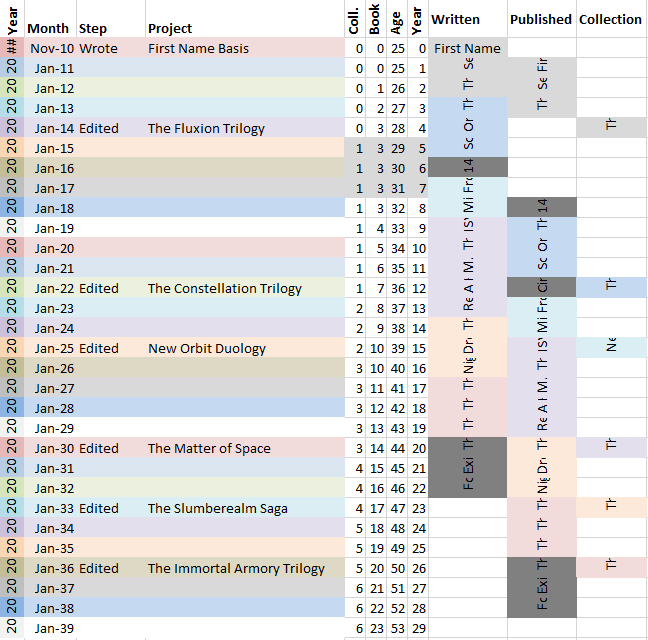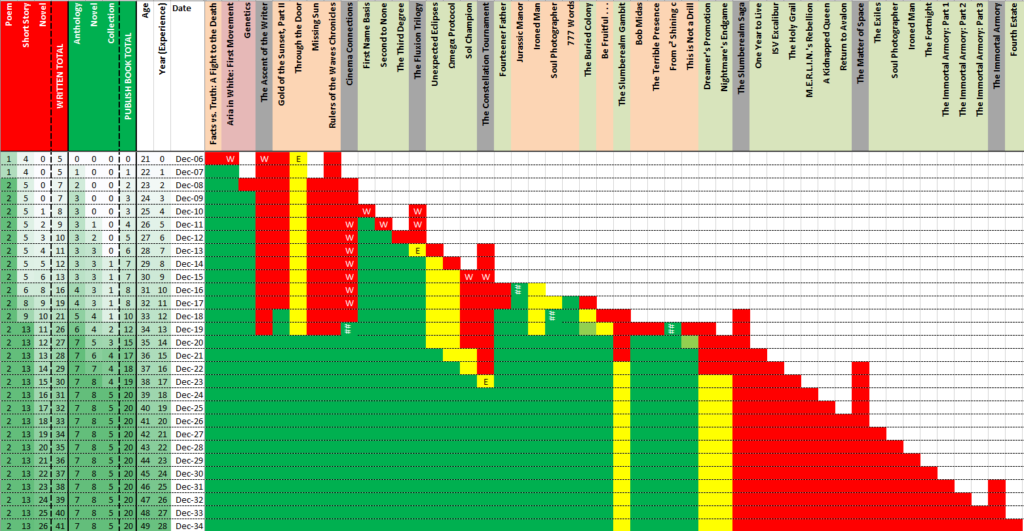About three years ago, I decided that I wanted to take my writing seriously. In 2016, I had a bit of a gap in my self-publishing schedule, having published the Fluxion Trilogy omnibus two years prior. I learned a lot in publishing my first three novels, so this was part of the reason I was taking some time to ensure the future products I published would be of the necessary quality. I was still writing drafts of the books I wanted to write; I just realized it would take longer to get them into polished shape for publication.

Since I still wanted to publish the stories I had backlogged, I needed to figure out a schedule where I would release one book a year for the foreseeable future—much like I had done with my first trilogy. This was my definition of taking my writing seriously. Expanding my bibliography of published works every year seemed like an achievable goal, so I started in 2017 with publishing second editions of my first trilogy. Most of the content of these books was the same; they just had some updated proofreading and covers that weren’t just created with simple online tools.
Best laid plans . . .
When I was initially planning out my release schedule, I was going under the impression that I would publish the most recent book I had written only after all the books that I wrote before it were released. Pretty quickly, I realized that I didn’t like that schedule. In 2018, I published my memoir, Fourteener Father, which was the seventh book I had written, and not the fourth. I did this because I had finished climbing all of Colorado’s 14,000-foot mountains with my dad the summer before and wanted to publish the book while it was still fresh and relevant to my life.
The next wrench in my plans was when I wrote Buried Colony as my eighth book. Considering the current technological advancements and my predictions for their use in the next 20 years, I needed to get this book published as soon as possible. While I felt it was a commercially-viable book, the hard science fiction genre seemed a little too niche for any agents to pick up. Regardless, I knew I wanted to get Buried Colony out before my predictions became a reality. However, because I decided to try the traditional publishing route with this book, I knew I wouldn’t have enough time for final professional edits to get this book out by the end of 2019 and keep with my yearly release goal.
Holding to a schedule is hard.
Fortunately, I had decided to wrap up my movie blog, Cinema Connections, in 2019. Since all the content was mostly written, I figured it would be an easy thing to compile together and publish this year. While it ended up taking a lot more time than I had anticipated, I was able to fill this small gap with a project I had already written. After all, it would look weird if I went ahead and polished up a trilogy and didn’t publish each subsequent book in three subsequent years.

With my plan to release Buried Colony next year, I decided to pull out my old schedule from 2016 and give it an update. While most of the books I planned to write were still in the correct order, I have since added in a few other book ideas that I want to get to sooner rather than later. Even with a slightly jumbled schedule, I could still meet that yearly release schedule. However, 2019 taught me that having a book that I can slide into a gap year is another useful way to reach my goals. I started searching for other content I had created that I could use for another book (like I wrote about in a previous blog post).
Short stories also count as publication.
While I didn’t start my “serious” release schedule until 2017, I did manage to release a book in 2016. My short story, Jurassic Manor, was included in the Domesticated Velociraptors anthology that I helped to put together. In 2018, not only did I publish Fourteener Father, but I had yet another short story (Soul Photographer) included in the Last Shot Fired anthology. By 2019, I published Cinema Connections, and also had my From c² Shining c short story published in the Crossing Borders anthology put on by Lulu press. It was at this point that I started realizing I had started being a serious writer many years before I even wrote my first novel.

In my head, when I self-published my very first novel, I felt like a real writer. However, I had written quite a bit during college, crafting at least a few short stories and pieces of poetry that were published in the annual creative journal at my school. I had also written articles for the school newspaper, racking up an impressive 57 published articles in my year of graduate school. Looking back, I was first published in 2007, at least three years before I even had the idea to write a novel.
When I updated my publishing schedule this year, I also took the opportunity to look backward and start counting some of my earlier accomplishments as a writer. Everyone has a different definition of what makes them feel like a “writer,” and I’d encourage those of you who don’t think they’re there yet to take another look at the writer’s journey you’ve been on so far and to consider that perhaps you’ve already become a writer. It was encouraging to learn I had been in a published work (either an anthology or my own book) once a year since 2007. Granted, I have a lot more drafts waiting to be published, but at least I know I can release one a year without worry.

What about you? How do you define being a “writer?”
What are your plans for your writing?
Can you pinpoint when you first started writing?
